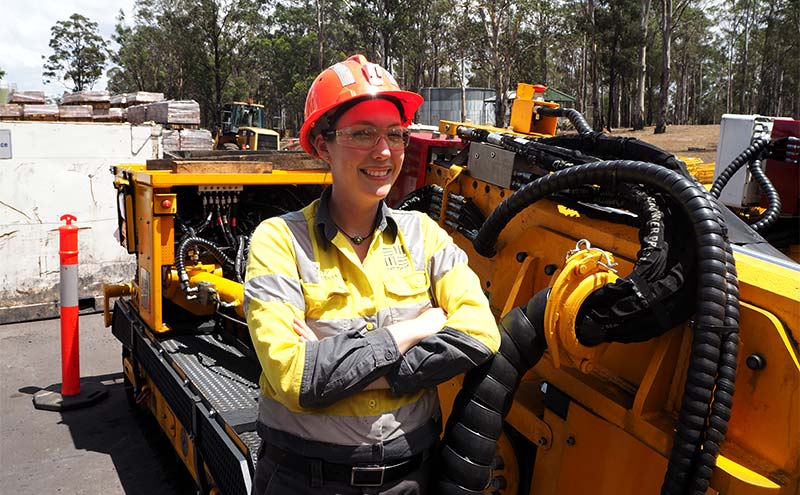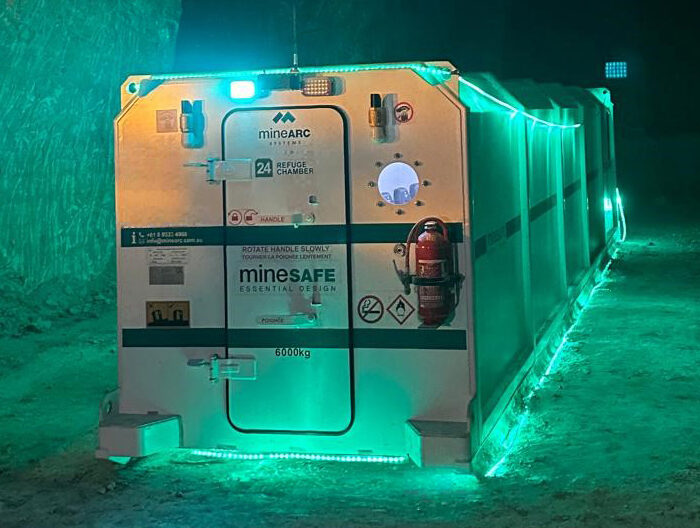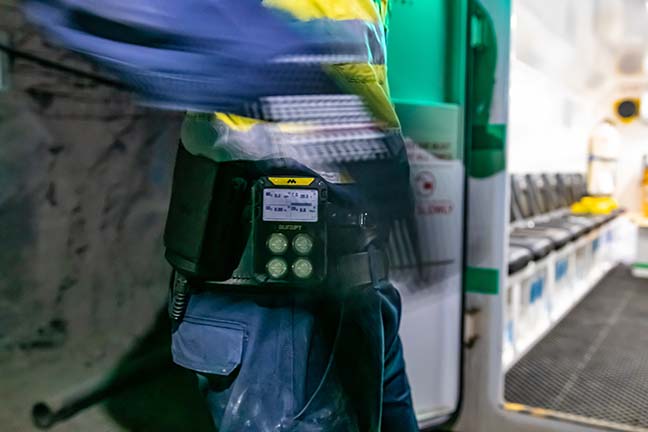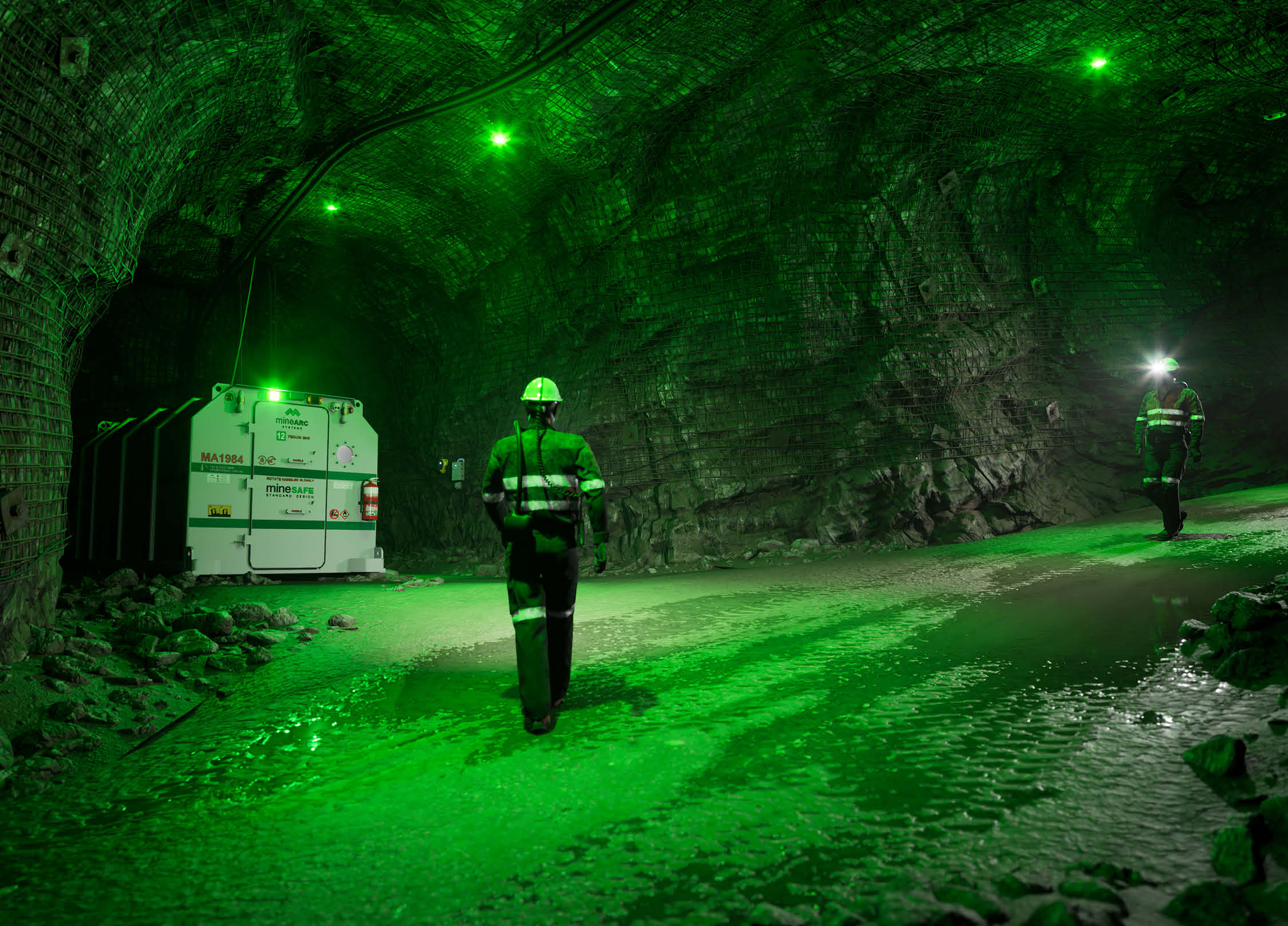Kristy Christensen, Director and Female Inclusion Expert for Shesfreetobe Ltd, and Senior Mining Engineer.
From rock collector to renowned expert, Kristy Christensen has been shaped and strengthened by the earth around her.
She possesses a wealth of knowledge as a technical and operations leader with experience in geology, geotechnical engineering, gas drainage, and mining engineering across multiple commodities and regions.
Working in the mining industry for over 15 years has enabled Kristy to unearth new passions and become a strong advocate for the health, safety, and wellbeing of females in the workplace.
In recent years, Kristy has dedicated her time to help guide organisations through impactful changes to promote more inclusive and diverse environments above and below ground. As the founder of Shesfreetobe Ltd, Kristy continues to deliver practical approaches that enable everyone to thrive.
Kristy shares her favourite moments in the industry, significant influencers, and what she believes is driving change for a more inclusive future.
Enjoy!
You’ve been involved with underground mining for several years, what first drove you to enter the industry?
I am a curious person, always questioning how and why things are how they are. I have had a rock collection forever and a love of science, so I did a Geology degree at uni and landed myself a role with an NZ junior gold company exploring for gold (dream job!). We had a historic mine on our tenement, which was my first introduction to Underground (UG).
Then the next role I landed was in a central QLD coal mine as a UG Geo. I thought I had made the biggest mistake of my life working in UG coal as I was the only woman out of 1000 men, and my 23-year-old self was intimidated and freaking out. We had some good rumbles, found our groove and the rest is history.
I loved the excitement of it all. I got to understand how I could fit in and find my sense of belonging, the scale of the mining gear, and the insane places we fit through. I thrived on the challenge of discovering and identifying critical changes in the mine environment. There was never a dull day!
You’ve worked in many roles across different commodities in soft and hard rock mining. What was your favourite, and why?
Hands down UG Coal Mining. Every pit I worked in and every gentleman I met under there grooved a space in my heart.
The challenge of winning coal can be immense; I have worked at many of the gassiest and structurally complex mines in Australia and seen some intense conditions.
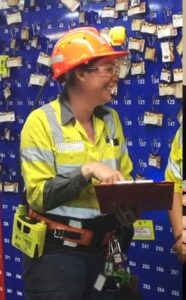
When you are standing on a longwall face, and you can hear car-sized pieces of the roof breaking off and falling onto the face shields above you; that’s when you know you are alive and appreciate the power you are up against.
I think when it is hard-won, it makes such incredible teams; who all muck in, battle it out through plan A-Z and you feel proud of your days’ work.
I often refer to it as feeling like the last frontier when I am helping clients bring females into that environment. I’m proof that it can be done. I move them from an organisation that is unaware of the structural barriers, to a transformational place where women’s journeys are acknowledged and supported. I LOVE my job!
Were there any people who had a significant influence in your professional career, and as an advocate for women in mining and resources?
Four people stand out; my career coach Katie-Jeyn Romeyn, plus three past leaders from Illawarra Coal (IC) Dave Benson, Heath Hannigan, and Joanne Page.
Katie-Jeyn Romeyn helped me lift myself from the depths of burnout and overwhelm in 2018. She helped me realise my dream of bringing Shesfreetobe to life to help other women in the mining industry, and navigate the sea of poor mental health to come out as the captain of my life and career. She straight talked me back to good and gifted me her toolkit of skills and kick-ass lessons that I now carry with me always. Everyone needs someone like this in their lives to thrive.
I was privileged to meet my future boss Dave Benson at IC. I asked in the interview about maternity leave and how it works for females who work UG, and although that could be a show-stopper question, he was unphased, and I got the job. There were women already working across the business and UG; he had a core belief in the value of women graduating and entering our industry would bring. Dave was a big supporter of me, he was quietly powerful and influential, and I have a tonne of respect for him. Later, when I did get pregnant, he was the first person I told, we navigated that together with him letting me take the lead. He gave me a promotion on returning to work.
Heath Hannigan is still my favourite Ops Manager. I also worked with him at IC, and after 1.5 years, I nervously asked him to be my mentor and outlined my plan of how that would work. He helped me explore and question why our organisation had the structural barriers it did. When there was action needed to include females, he said ‘just do it’. He championed the original UG toilet design; a six-year journey of multiple business cases and changing leaders. I later found out they were implemented just after I left which is a win.
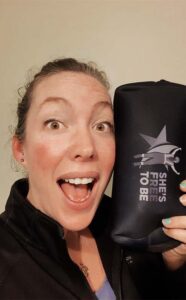
Last but certainly not least was Joanne Page. I shared my idea for toolkits with female urination devices and menstrual cups, and she got the funding to make it happen.
Joanne shared my ‘A day in my life’ story about my workplace challenges with senior leaders which eventually secured the financing for the UG toilets. And she listened when I explained that we needed to put a framework around how we manage pregnancy. I showed her my research, and together we made some magic.
Why did this have a significant impact?
We get told that as women, we need to be more confident, be brave, lean in etc. We do need to own and take action around our careers, but what we don’t get told is that workplaces weren’t designed with women in mind and they need to change too.
These incredible people supported me to challenge some of the accepted norms and got behind my ‘wild’ ideas.
What they did was advocate for me when I wasn’t in the room, which meant I was able to have an impact and improve our organisation from within.
In 2018, you were awarded the Exceptional Young Woman in Mining NSW, for the health, safety, and wellbeing initiatives you instigated at Illawarra underground coal mines. How did this award make you feel?
This award felt incredible to receive, it was a massive honour, and I am thankful that Jo nominated me.
I had done so much work outside of my role implementing different fixes for the workplace, policies and processes which I could see were holding women back. Parents’ rooms, policies, facilities, soooo many confronting and awkward conversations, and it felt like a beautiful reward for that effort. I also came highly recommended in the National WIM Awards, which was awesome. However, due to not looking after myself, I was in a poor headspace for this one. Overwhelm can get us all. I had to step back, assess my life, and make some changes to ensure I was mentally healthy again.
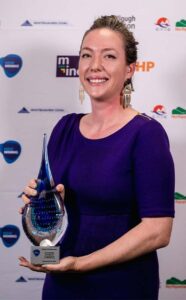
Over the years, how have you seen the role of hygiene grow, in building a healthy and safe environment, for all underground personnel?
When I first started underground, I still hadn’t figured out how to go to the toilet easily or even been brave enough to ask.
Richie, the Panel Supervisor, took me aside and told me if I needed to go that I should head in along the roadway behind the longwall, find a quiet spot and go, as that was where I was most likely not to be disturbed.
He said the toilets are disgusting, we only use them in emergencies so don’t use them. To paint a picture, those ‘toilets’ were a tank on a trailer with a toilet mounted on top. No walls, equalled no privacy, it was open, so you saw everything. It was often covered in its contents and very smelly.
To have the availability of a higher standard of underground toilets is so much better. Four walls, sanitary bins, you can’t see everyone else’s business, a hook to hang your belt, running water = bliss!
There are no excuses now not to have decent facilities for everyone!
I still carry a female urination device for those moments where you are far away from the facilities or their condition is not up to scratch. That’s why those little lifesavers are in my toolkit. After historically not drinking water, so I didn’t have to go, resulting in dehydration headaches and brain fog, female urination devices gave the relief of hydration at work again. Now nice toilets UG; we sure have come a long way.
How far do you believe the industry has progressed in terms of an inclusive workforce? What do you see as the next steps to move forward?
There is this massive focus on recruiting females which is awesome to see. However, there are other vital steps to take to assess the workplace and break down those barriers by redesigning to include women.
Organisations working with me are jumping this hurdle because recruitment is only 25%, and the other 75% is essential and my specialty.
I help because I know what it feels like not to be considered and understand how we are excluded. Through my lived experiences, I bring that knowledge when I do my ‘A Day in HER Life Assessment’. I help the site to set up the systems and processes needed to support women through each stage of her life. I educate those front line leaders on how to support and understand a female workforce and help encourage and coach the females that enter that business. When women are included, everyone benefits.
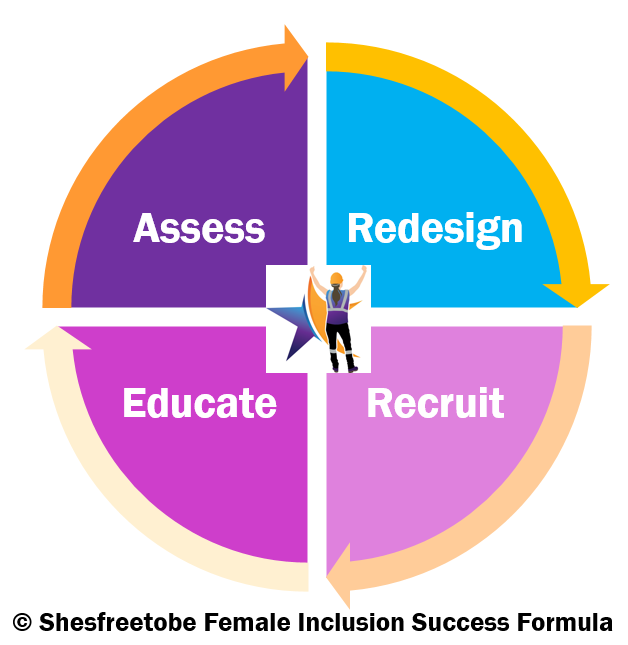
How have things changed for the better for women in the industry?
The conversations happening in organisations are fantastic; connecting, exploring, and getting curious about other’s experiences of a workplace is vital.
The opportunity to be better is being discussed openly, and action is being taken to address barriers to women. The Workplace Gender Equality Agency (WGEA) measures progress, and this has forced transparency on the issue. Plus, organisations are also measuring themselves further in focus areas.
None of this was happening when I first started; it was fit in or (insert expletive here) off.
That can still exist at the operator level, which forms the larger part of our mining workforce. Nevertheless, we see that somethings like providing proper toilets show that when we change the facilities to include women, it benefits everyone.
As an advocate for women in mining, how have you used your position to educate the industry better, particularly surrounding hygiene?
I’m vocal about how women’s bodies function differently than men’s; it can be an uncomfortable conversation to have, but it’s necessary. Societal conditioning made it unladylike. We should be seen and not heard, and we certainly shouldn’t publicly discuss women’s bodies and the amazing functions that support bringing forth humanity!
It can be awkward for a woman to discuss this with a male colleague or leader. So, I do the talking, and my toolkits have paved the way for those conversations to occur. Many men have never heard of a female urination device or a menstrual cup. Often they never considered the need because it’s a need that they don’t have. They didn’t consider how a pregnant woman or someone going through menopause would experience the workplace because it will never be their situation to navigate.
I always ask the men I teach to ask me all the dumb questions in the world. It’s far easier for me as a consultant to provide an answer than a peer who may not want to share that information for various reasons. These conversations apply to any discussions about an excluded group, whether it is based on race, religion, etc.
What do you wish you had known when you first started in the industry? What advice would you give those starting?
I wish I were given my toolkit from day one on the job to save me so much lost time and struggle! It took me four years to find female urination devices. Two of those were spent in traditional overalls; so to be able to stand, slip my undies aside, and relieve myself without taking all my gear off, re-button and keep on – what freedom. Freedom from headaches; freedom from brain fog; freedom to be a woman.
The menstrual cups I found ten years into my career when I really needed them. I had come off the pill to have children. After years of using and abusing it by skipping periods all the time (so I didn’t have to manage that situation underground), my flow was all over the show. I HAD to find a way to manage it, and after discussing it with my friend, she introduced me to the menstrual cup. The cup has a larger capacity and can be used with other forms of management to last on a heavy day for the full 12-hour shift.
It took my body two years to conceive after all the messing around I did to it to fit into my working life. The anxiety I was experiencing around how to manage was alleviated, and again, that freedom to be a woman.
My advice is to get yourself a toolkit if you work remotely or ask your business to invest in them. That’s the band-aid and for emergencies. Companies, please invest in proper facilities because it is a fundamental human right and from a health, safety, and wellbeing perspective – it must be done. If you had a workforce that was 100% women, this would be done already.
What are you streaming or reading at the moment?
I listen to a lot of podcasts and audiobooks as I travel for 2.5 hrs a day to get to and from my day job as a Senior Mining Engineer. So at the moment, I’m listening to the ‘Bodies’ podcast on Spotify. It’s based around women’s medical mysteries, and each story is beautifully crafted and compelling with so many lessons to take away.
I also just finished Brene Browns ‘Dare to Lead’. She is an incredible and heartfelt storyteller who conveys her research and findings on vulnerability, being brave and how we can construct and deconstruct our personal armour to lead our teams of people better. My favourite takeaway was that ‘Trust is built in the small moments that fill your marble jar’ not really in big grand gestures. I can apply that to every part of my life, with my kids and my husband, my day job, and through Shesfreetobe to help my clients.


